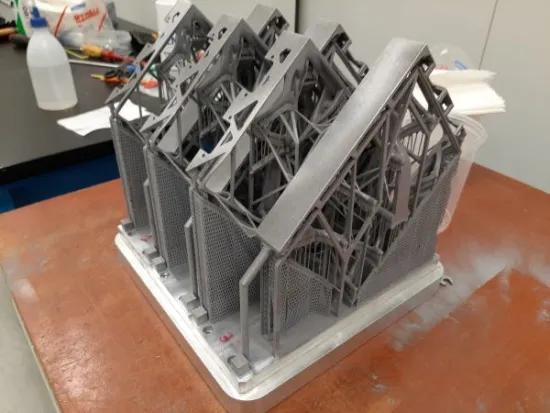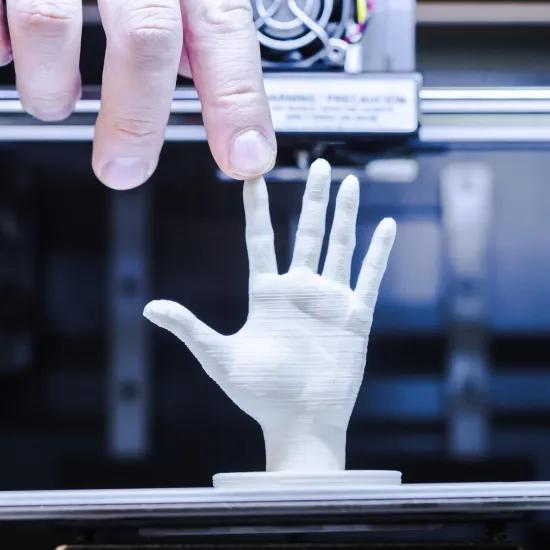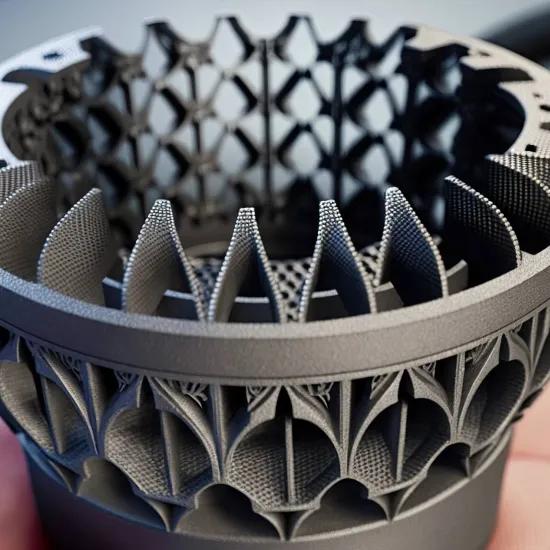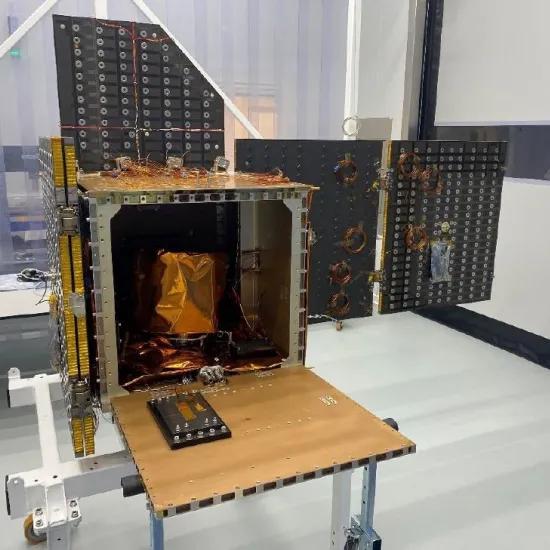A few years ago, the Walloon company Thales Alenia Space Belgium and Sirris initiated the ThermAM project, as assigned by the ESA, to redesign and produce using additive manufacturing, electronic component mounting brackets for the aerospace industry and other fields where strict heat management is required. This production procedure proved not to be optimal and the production lead time was too long. The high production costs of the mounting bracket made it unattractive compared to standard solutions, despite higher thermal performance. A follow-up project was set up to improve the overall design and production process, and to reduce production costs.
Production challenges
The optimised product consisted of a printed metal support frame with a built-in heat pipe for a circuit board, the topology of the frame was optimised to reduce mass. The built-in heat pipe enables the efficient discharge of heat from the electronic components to the base plate.
A microsatellite-sized application was selected as a use case to identify the main requirements. The use case was selected for its limited 3D print volume and the availability of an evaluation model of a unit to perform tests.
Various solutions to improve the overall process were taken into consideration. Several selection criteria were used to compare the various solutions, awarding a score based on cost, lead time and expected pay-off.
The benchmark is a production time of 66 hours and 21 minutes to print two parts, with most of the time used to build the support structures. The optimisation of the production process, the redesign of the product and support structures, and an increase in the number of units per batch can reduce the production time per part.
Adapted design for production
Palletisation
The finishing of the part is an important step in the production flow. The conventional approach consists of separating the parts from the build plate, removing the supports and processing the workpiece via CNC operations to the required tolerances. The complex shape of the part makes it a challenge to determine the required references and to clamp the part in the CNC machine. The required finishing steps and the forces to which the part would be subjected during post-processing were therefore calculated and taken into consideration during the design of the central support structure. The part can therefore be processed while it is still secured to the build plate.
At the palletisation stage, the build plate is used as a point of reference to start the machining of the functional surfaces. This is not as obvious when multiple parts are on the build plate and not all areas to be machined are accessible. To resolve this issue, we developed a modular build plate consisting of three smaller building boards. One or two parts can be printed onto each of these build plates, which can easily be positioned in the milling machine at a later time. Both the positioning and the finishing are therefore sped up and made more efficient. This approach reduced the total printing time by 57 percent.




